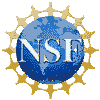0.2. Key Concepts¶
0.2.1. Key Concepts¶
0.2.1.1. Key Concept: Language¶
\(\Sigma\): A set of symbols, an alphabet
Notation: Usually we use for examples: \(a, b, c\)
String: Finite sequence of symbols (from some alphabet)
Notation: usually we use for exampls: \(u, v, w\)
Language: A subset of the strings defined over \(\Sigma^*\)
So, a language is a set of strings, in particular, some subset of the powerset of \(\Sigma\).
0.2.1.2. Language Examples¶
0.2.1.3. Key Concept: Grammars¶
A tiny subset of the english language, not complete!<sentence> \(\rightarrow\) <subject><verb><d.o.><subject> \(\rightarrow\) <noun> | <article><noun><verb> \(\rightarrow\) hit | ran | ate<d.o.> \(\rightarrow\) <article><noun> | <noun><noun> \(\rightarrow\) Fritz | ball<article> \(\rightarrow\) the | an | aNote: \(\rightarrow\), |, Variables vs. Terminals
0.2.1.4. Deriving a string¶
A variable in the grammar can be replaced by the right hand side of its rule:
Fritz hit the ball <sentence> -> <subject><verb><d.o> -> <noun><verb><d.o> -> Fritz <verb><d.o.> -> Fritz hit <d.o.> -> Fritz hit <article><noun> -> Fritz hit the <noun> -> Fritz hit the ballCan we derive these sentences? If not, can we change the grammar?:
The ball hit Fritz The ball ate the ball
0.2.1.5. Formal definition of a grammar¶
A grammar \(G = (V, T, S, P)\) where\(V\) is a finite set of variables (nonterminals).\(T\) is a finite set of terminals (generally, these are strings).\(S\) is the start variable (\(S \in V\)).\(P\) is a set of productions (rules).\(x \rightarrow y\) means to replace \(x\) by \(y\).
Here, \(x \in (V \cup T)^+, y \in (V \cup T)^*\).
0.2.1.6. Example¶
0.2.1.7. .¶
.
0.2.1.8. Grammar Notation¶
\(w \Rightarrow z: \qquad w\) derives \(z\)\(w \stackrel{*}{\Rightarrow} z: \qquad\) derives in 0 or more steps\(w \stackrel{+}{\Rightarrow} z: \qquad\) derives in 1 or more stepsGiven grammar \(G = (V, T, S, P)\), define\(L(G)= \{w \in T{}^{*} \mid S \stackrel{*}{\Rightarrow} w\}\)Example\(G=(\{S\}, \{a,b\}, S, P)\)\(P=\{S \rightarrow aaS, S \rightarrow b\}\)\(L(G) =\) ?
0.2.1.9. Another Grammar Example¶
\(G=(\{S, B\}, \{a\}, S, P)\)\(P=\{S \rightarrow a \mid aB, B \rightarrow aa \mid aaB\}\)\(L(G) =\) ?
0.2.1.10. Key Concept: Automata¶
Numbers in control unit symbolize “states”, which are the specific positions on the dial that the arrow can point to.


